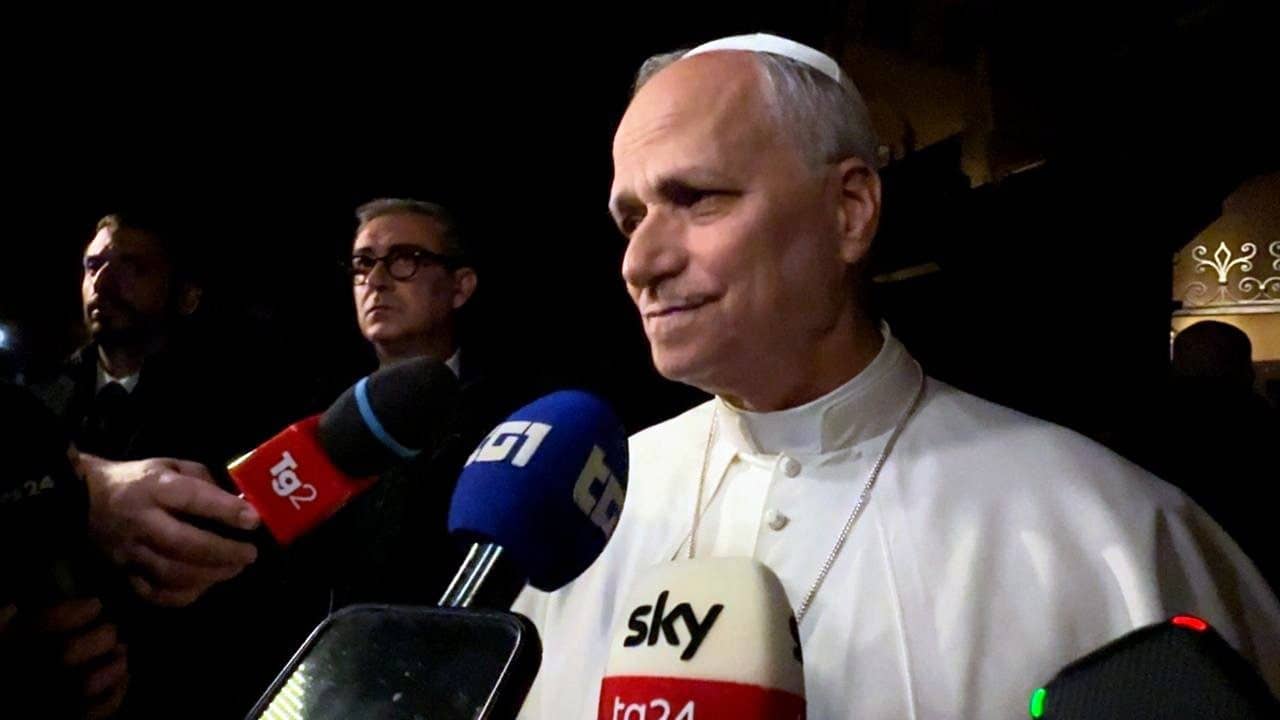One of the powerful images that initiates the Easter season is that of the empty tomb. Each of the Gospels testifies to the awe-inspiring fact.
In John’s Gospel, Mary Magdalen voices her bewilderment: “They have taken the Lord out of the tomb and we do not know where they have laid him” (Jn 20:2). In Luke, the angel’s voice offers a mysterious hint: “Why do you seek the Living One among the dead?” (Lk 24:5).
Thus the empty tomb becomes the door opening into another world, a boundless world – resurrected and transfigured.
Among the “dead” are the fear-ridden apostles who huddle together in the locked room. Thus the second image we contemplate is that of the closed, confined space, with doors and windows shuttered.
Into this constricted space the living Lord enters to liberate those who dwell in darkness and the shadow of death – which, of course, is all of us. And to all of us the risen Lord offers reconciliation and peace.
It’s a reconciliation that is no facile “forgive and forget,” and a peace that requires more of us than we thought ourselves capable of giving. We are invited to new grace and new responsibility by passing through the wounds of the crucified and risen Lord into the very heart of God.
Perhaps this is what Thomas perceived. We might, then, more justly imagine Thomas not as the stereotypical “doubter,” but as the visionary who sought to probe the depths of Christ’s passion, to gauge the immensity of the love revealed.
Courageous Thomas! “Unless I see the mark of the nails in his hands.” More yet: “Unless I place my finger in the mark of the nails and put my hand into his side…”
Perhaps Thomas is the one among the apostles who glimpses the true cost of redemption – and shudders. Blessed Thomas! You realize that the only release from the confines of fear, from the prison of self, is through the wounds of Christ.
How else can we recognize and confess him as our “Lord and God?”
The great symbol that presides over our liturgy throughout this Eastertide, the fifty days that comprise one Great Sunday, is the paschal candle.
Solemnly lit at the Easter Vigil, it proudly proclaims for fifty days the risen Lord of life. But it also prominently oversees the baptism of new Christians and the Mass for those who have died in Christ and have gone before us marked with the sign of faith.
The majestic Candle speaks silently but eloquently and profoundly: “Christ is risen, alleluia!”
As it does so, it still bears the marks of his wounds. The light it radiates indeed dispels darkness; but it does not deny darkness; it proclaims life’s victory, not by denying death, but by death’s transformation.
In a world where darkness too often seems to prevail, where innocence continues to be violated and hatred, like an apocalyptic horseman, gallops amok, we need the courage and realistic faith of Thomas. For he does not shrink from Christ’s wounds, but embraces them as sure signs of the love that alone can dispel darkness and lead to everlasting life.
Thus Saint Paul proclaims the apostolic faith when he declares: “All of us who have been baptized into Christ Jesus have been baptized into his death. We were buried therefore with him by baptism into death, so that, as Christ was raised from the dead by the glory of the Father, we too might walk in newness of life.” (Rom 6: 3-4).
It may be disconcerting to tell young parents who joyfully bring their newborn to be baptized that the infant is to be plunged into the dying of the Lord, precisely to be born anew into eternal life. But that is what the sacrament signifies and promises.
The sacramental sign is evidently more pronounced when an adult is immersed into the font, descending into the depth of the waters and their darkness, only then to be raised up into the light and life of Christ.
In the ancient baptistry of Saint John Lateran in Rome, surrounding the eight-sided pool (itself symbolic of the new creation inaugurated by Jesus Christ), there is a Latin poetic inscription, dating from the fifth century.
One of its stanzas reads: “Fons hic est vitae qui totum diluit orbem/ Sumens de Christi vulnere principium.” “Here is the font of life which bathes the whole world/ It takes its source from the wound of Christ.”
May the prayer the celebrant prays as he blesses the paschal candle at the Easter Vigil accompany God’s people throughout this holy season: “By his holy and glorious wounds may Christ the Lord guard and protect us. Amen.”
Robert P. Imbelli, a priest of the Archdiocese of New York, is the author of Rekindling the Christic Imagination (Liturgical Press).

















